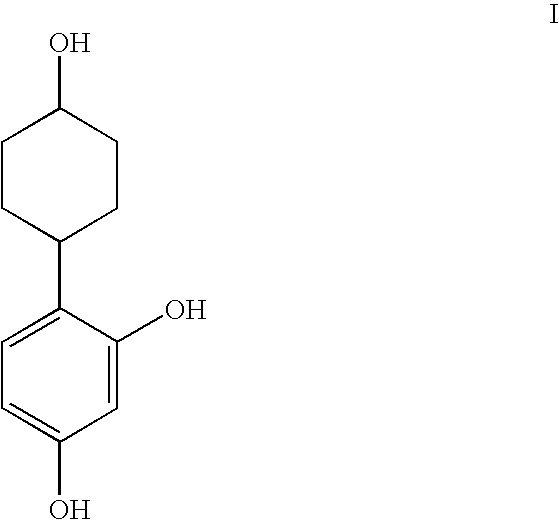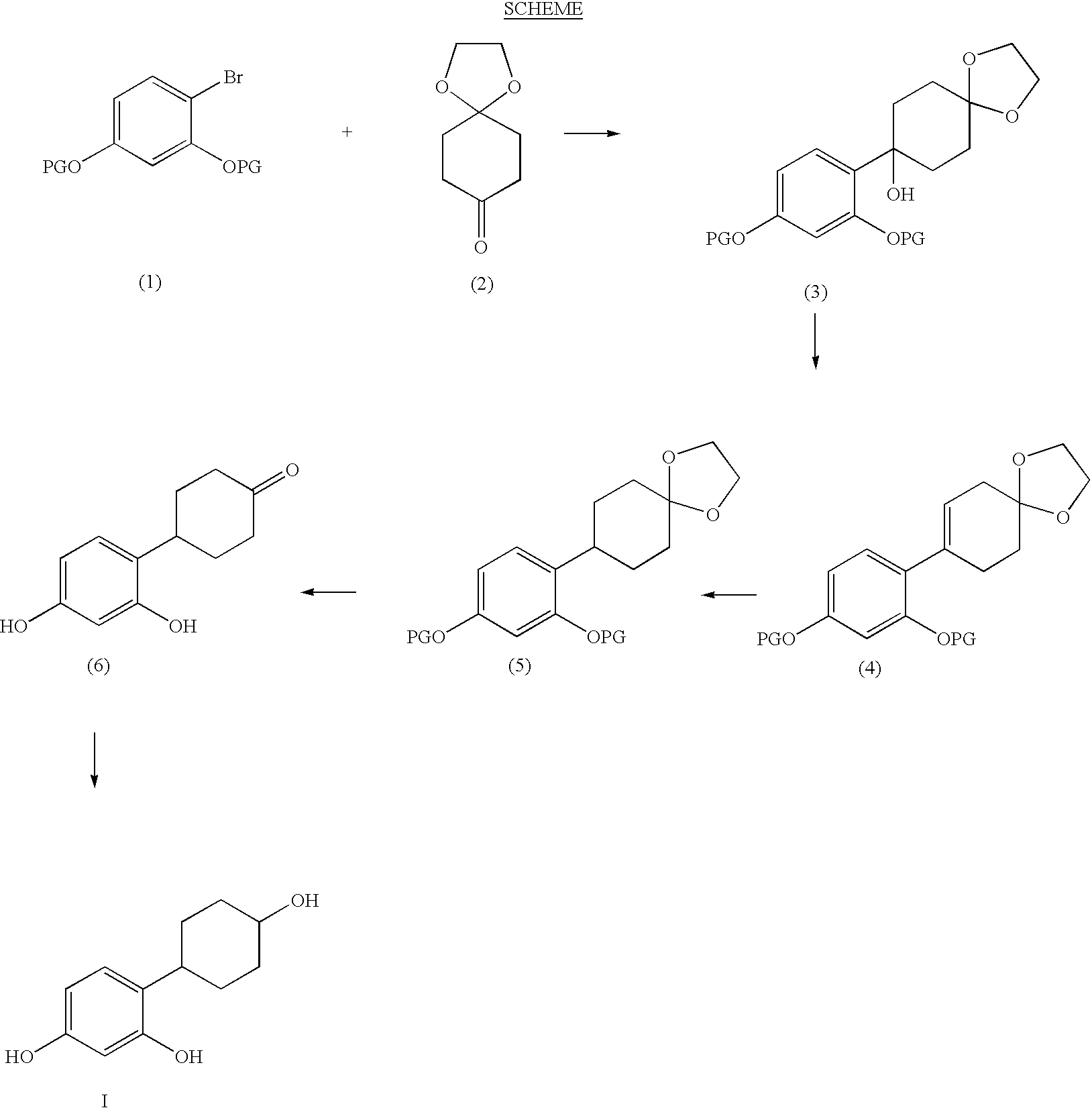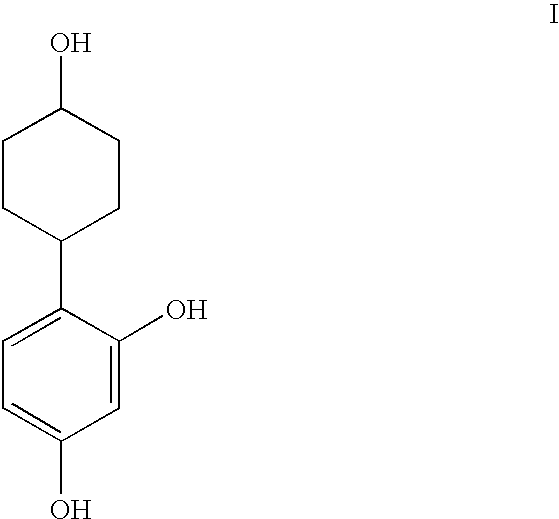Resorcinol composition
a technology of resorcinol and composition, which is applied in the field of resorcinol, can solve the problems of affecting the appearance, the odor and color change, and the depigmentation effect of thiol compounds such as glutathione and cysteine, and is known to produce side effects that can be dangerous
- Summary
- Abstract
- Description
- Claims
- Application Information
AI Technical Summary
Benefits of technology
Problems solved by technology
Method used
Image
Examples
example 1
(anti)-4-(2,4-Dihydroxyphenyl)cyclohexanol
4-(2,4-Dihydroxyphenyl)cyclohexanone (18 mg) was placed in a 25 ml round-bottomed flask equipped with magnetic stirrer. Ethanol (5 ml) was added, followed by sodium borohydride (3.3 mg), and the reaction mixture was stirred for 16 hr. Aqueous HCl (20 ml, 1M), followed by ethyl acetate (20 ml), was added, and the organic phase removed and washed with brine (15 ml), dried over anhydrous magnesium sulphate, filtered, and then concentrated in vacuo. The residue was purified by flash column chromatography (SiO2, ethyl acetate / petroleum ether, 60:40, v / v) to afford the title product (14 mg, 78%) as a white solid. m / z (ES−) 267 ((M+60)−1); δH(CD3OD) 1.38-1.56 (4H, m), 1.85-188 (2H, m), 204-207 (2H, m), 2.80 (1H, tt), 3.58-3.65 (1H, m), 6.24-6.29 (2H, m), 6.90 (1H, d).
PUM
| Property | Measurement | Unit |
|---|---|---|
| temperature | aaaaa | aaaaa |
| flash point | aaaaa | aaaaa |
| melting point | aaaaa | aaaaa |
Abstract
Description
Claims
Application Information
 Login to View More
Login to View More - R&D
- Intellectual Property
- Life Sciences
- Materials
- Tech Scout
- Unparalleled Data Quality
- Higher Quality Content
- 60% Fewer Hallucinations
Browse by: Latest US Patents, China's latest patents, Technical Efficacy Thesaurus, Application Domain, Technology Topic, Popular Technical Reports.
© 2025 PatSnap. All rights reserved.Legal|Privacy policy|Modern Slavery Act Transparency Statement|Sitemap|About US| Contact US: help@patsnap.com



